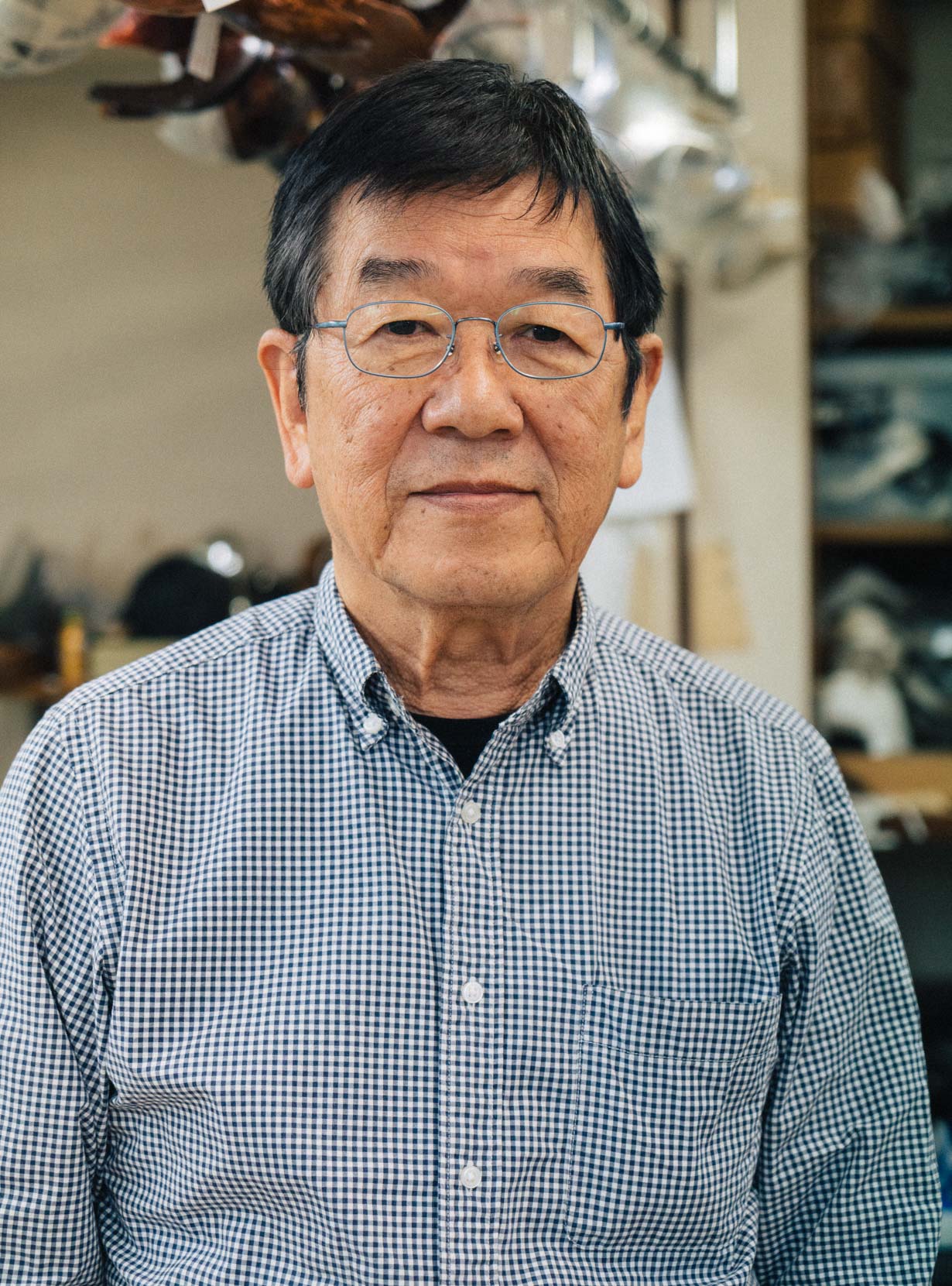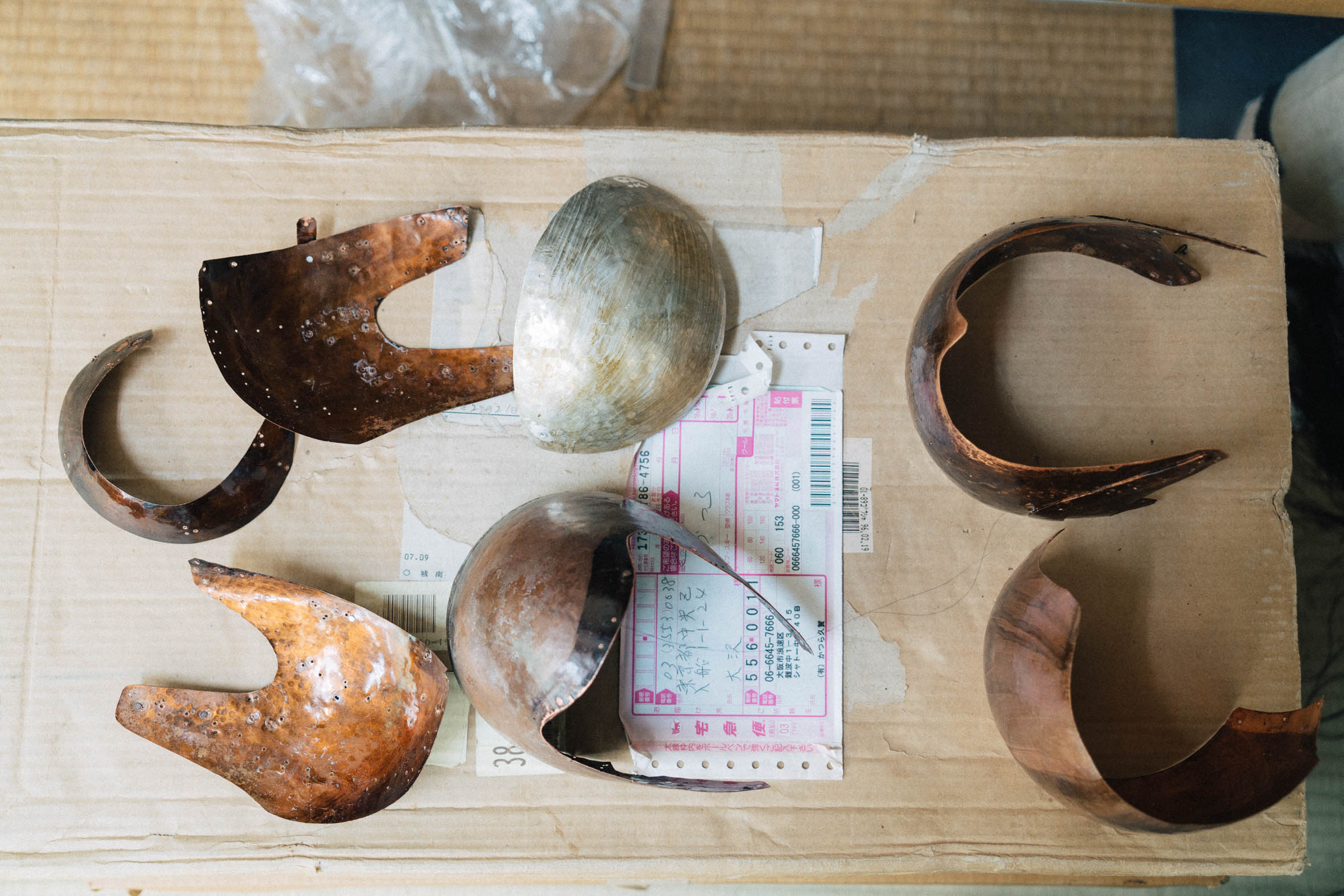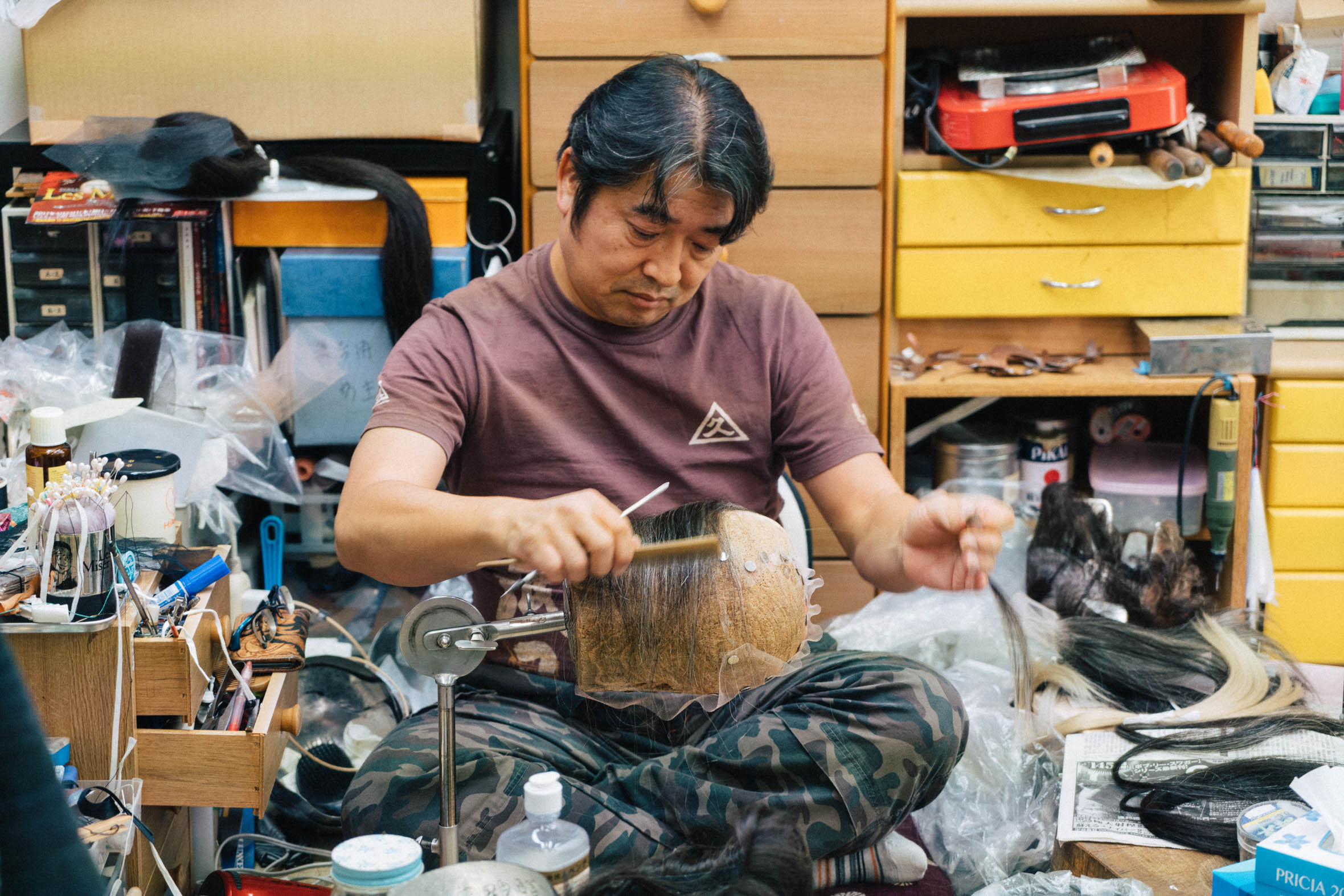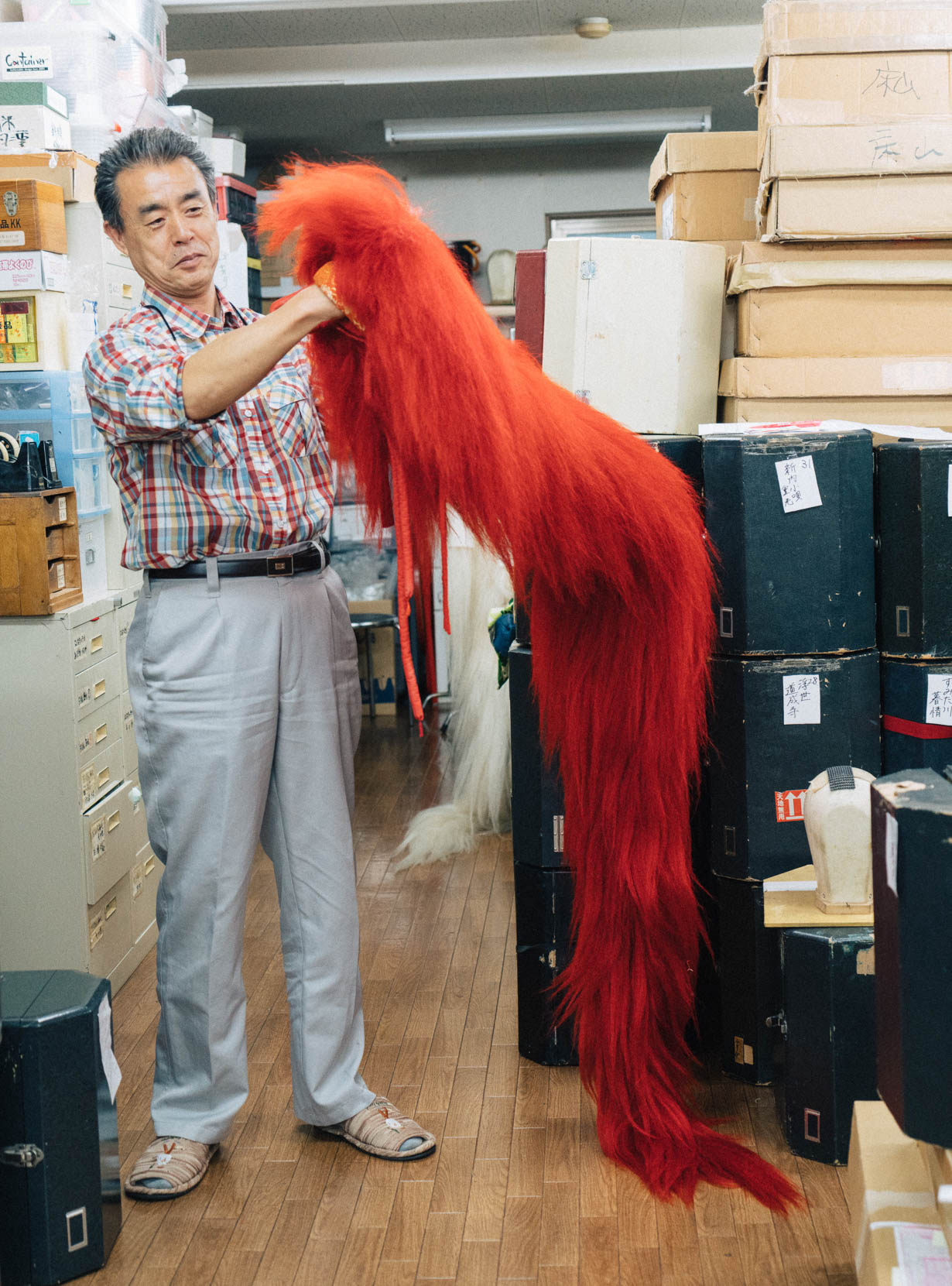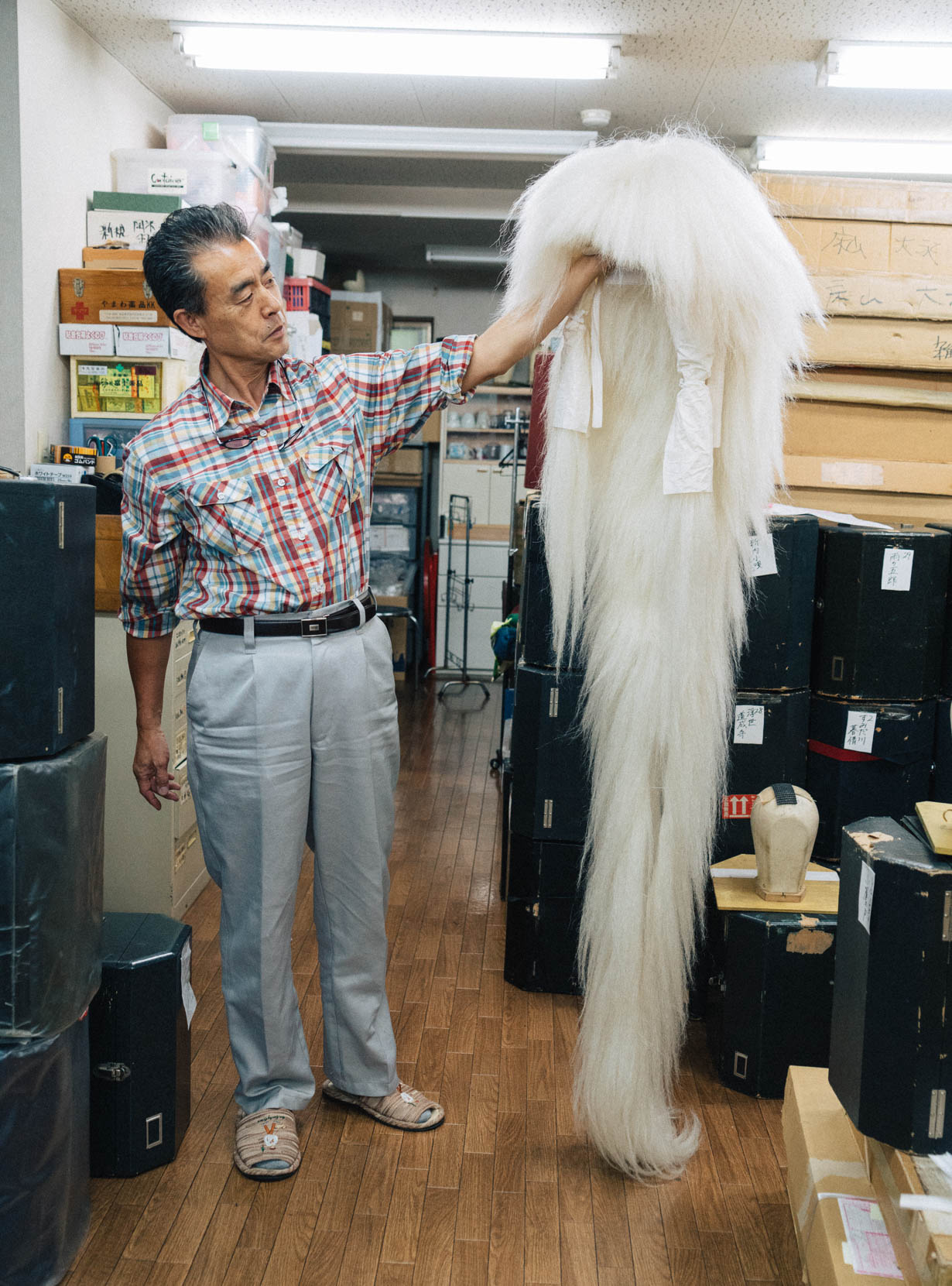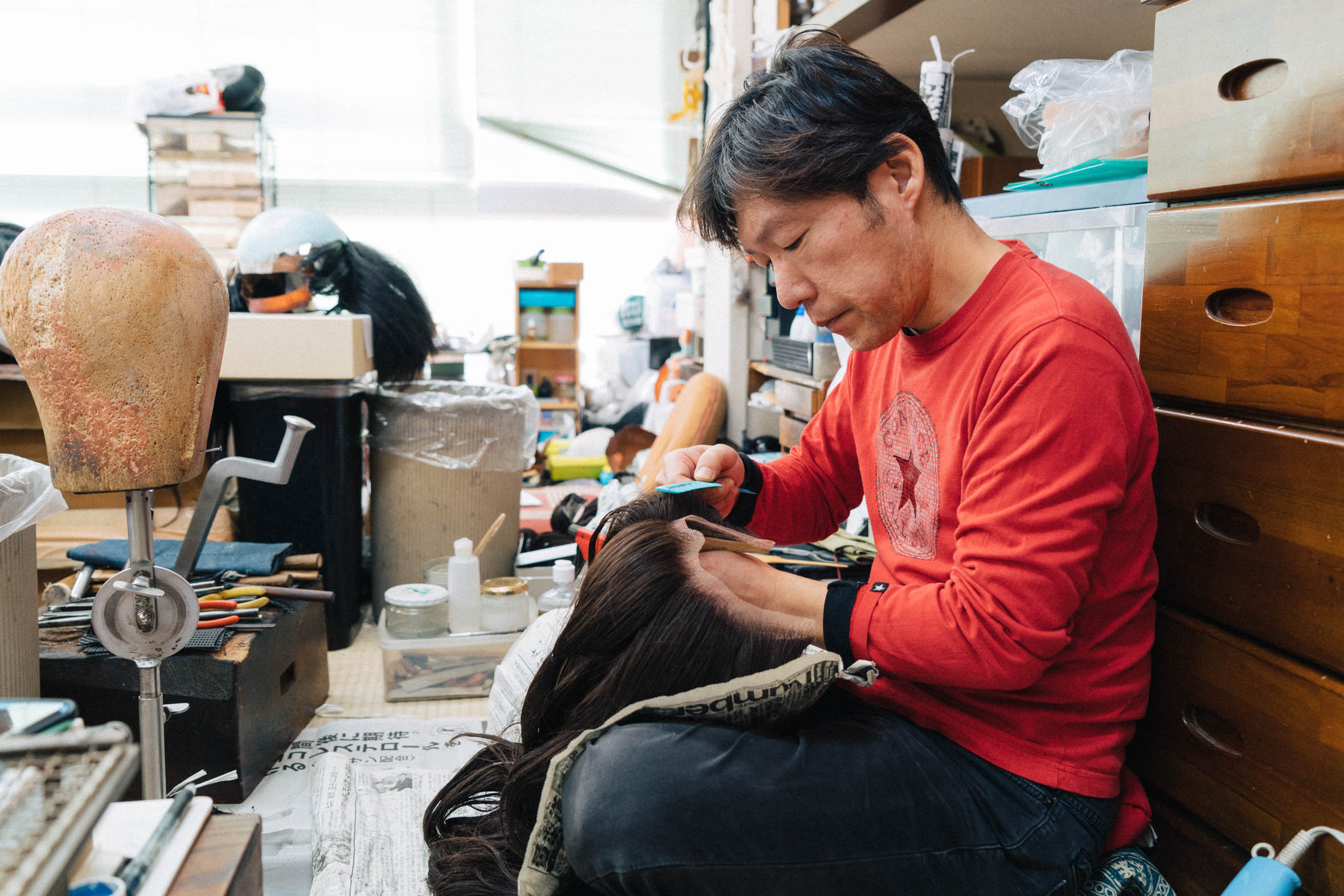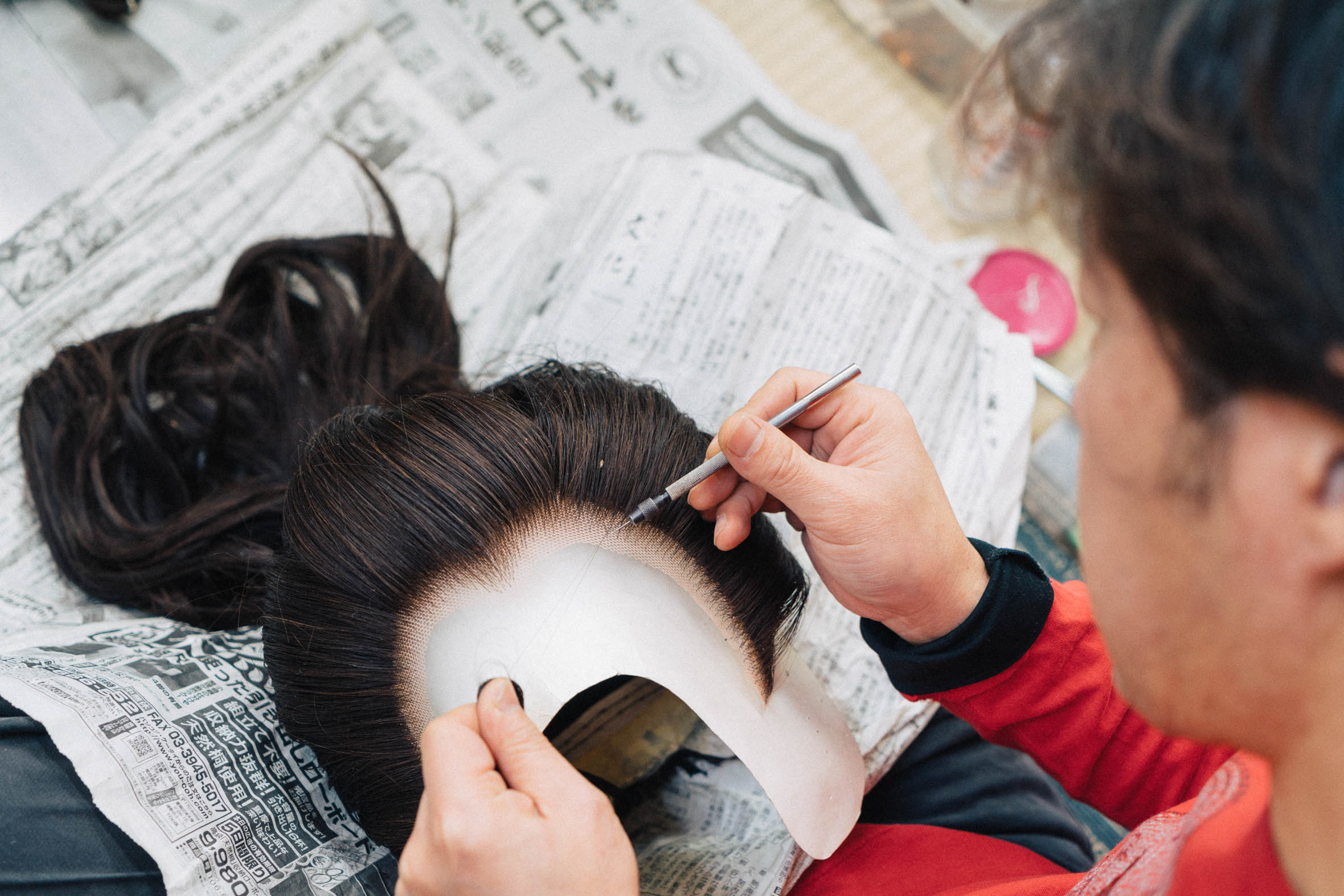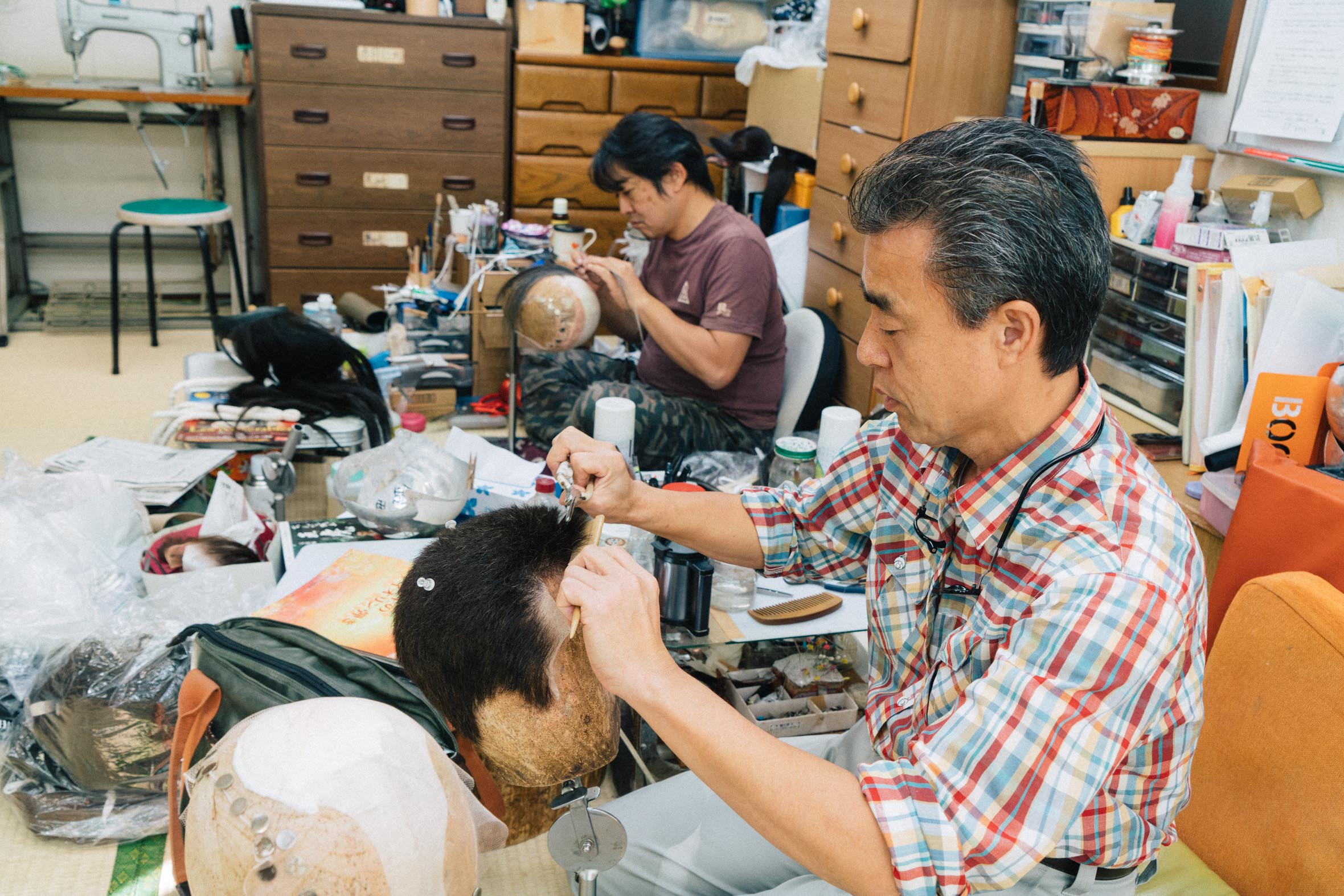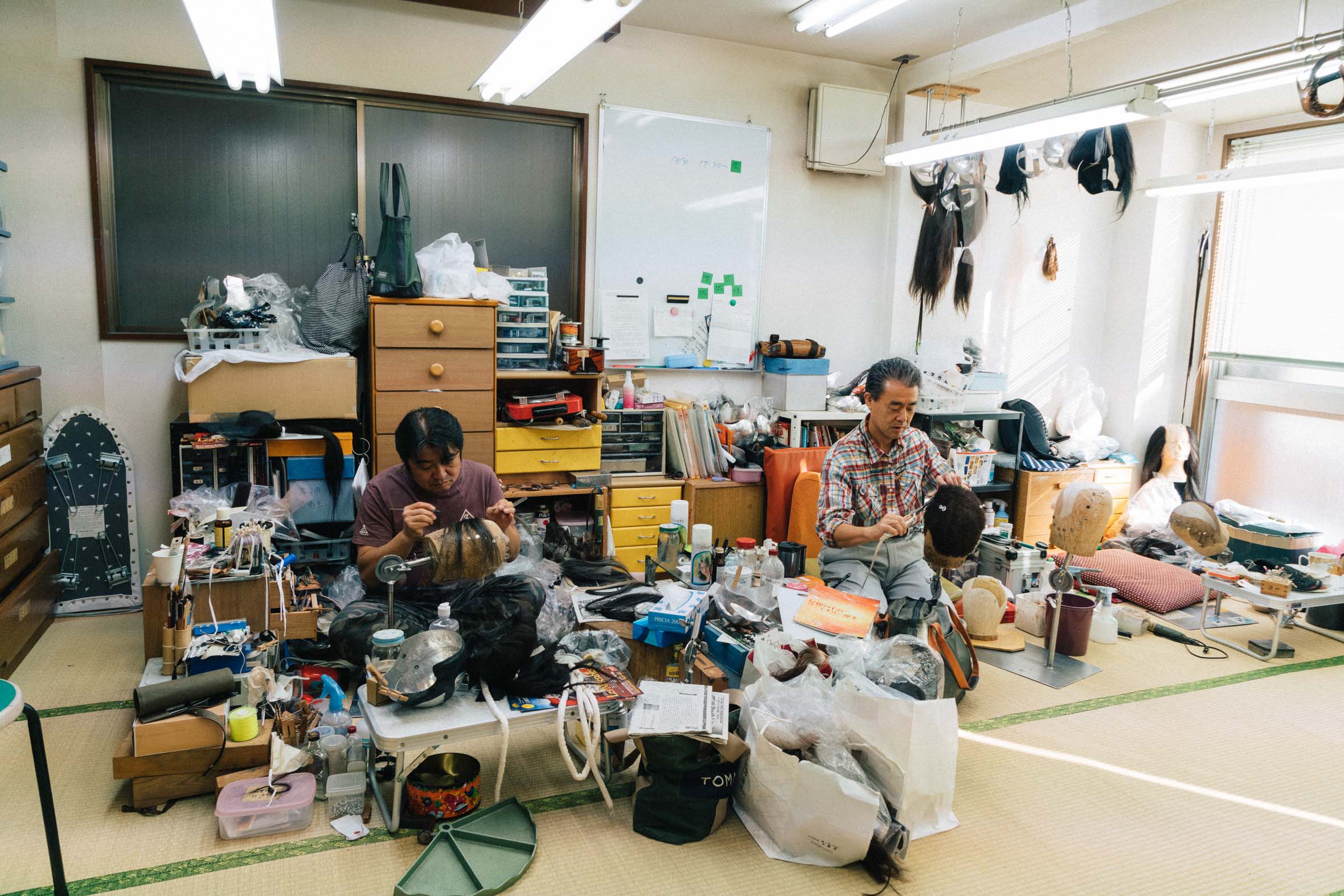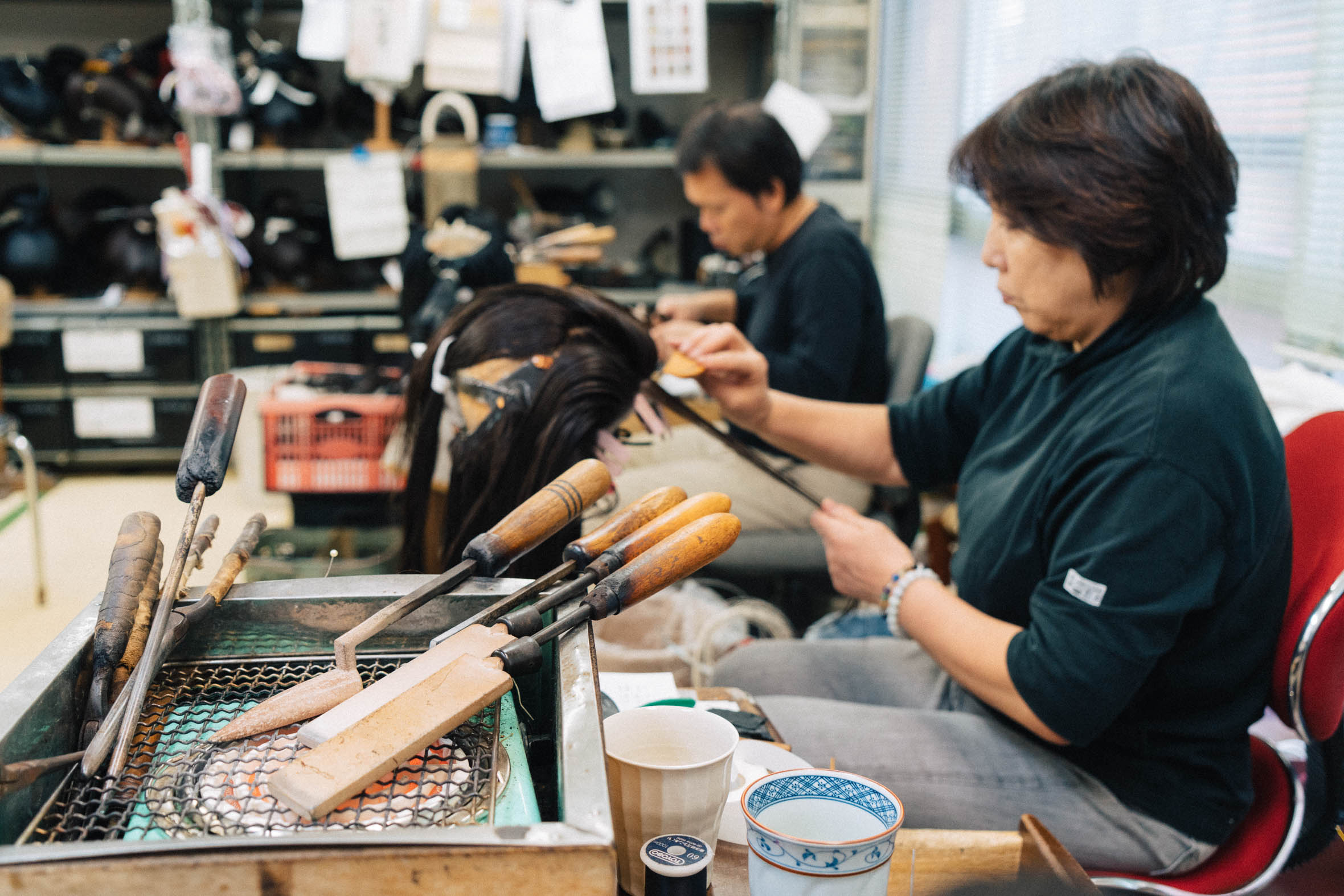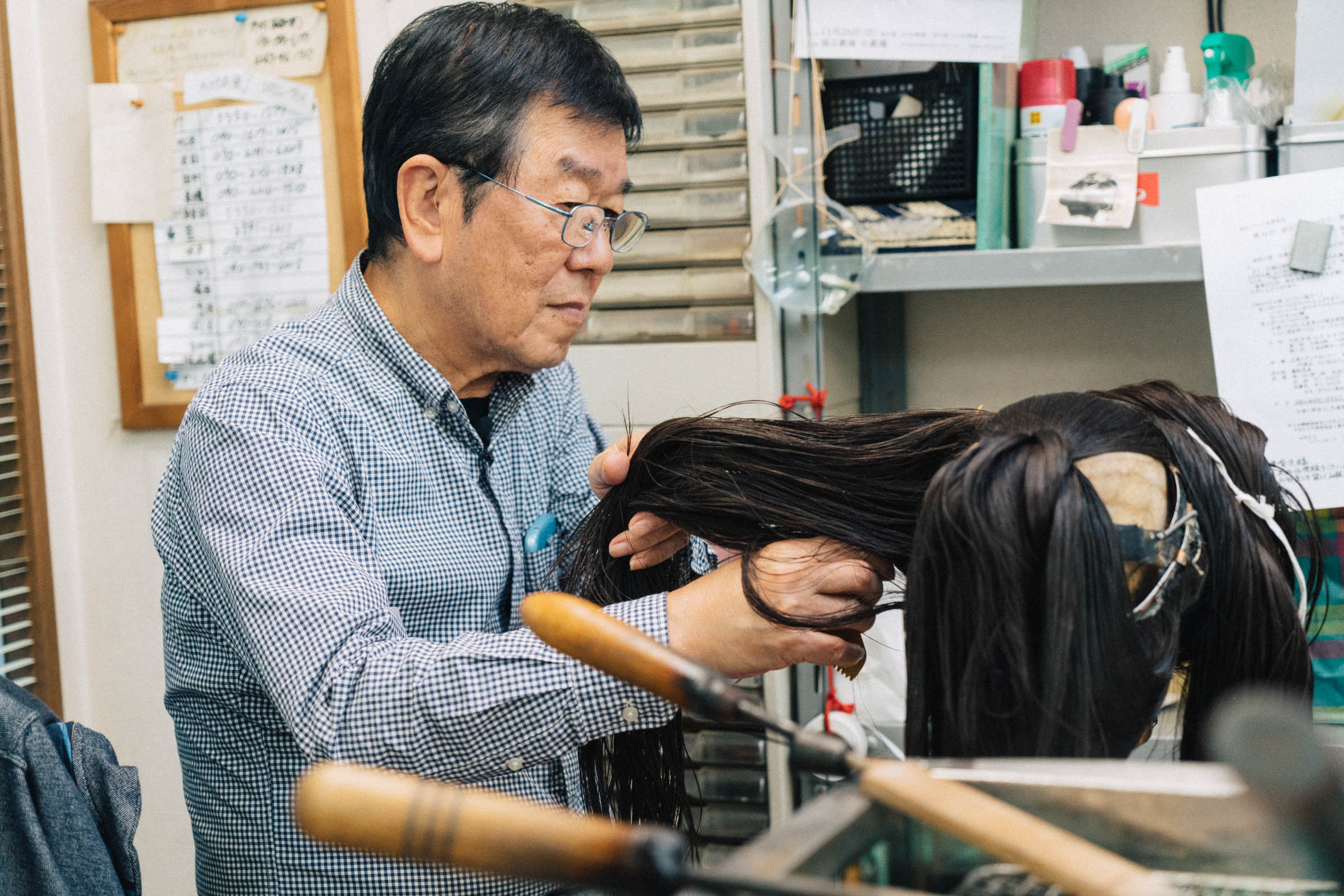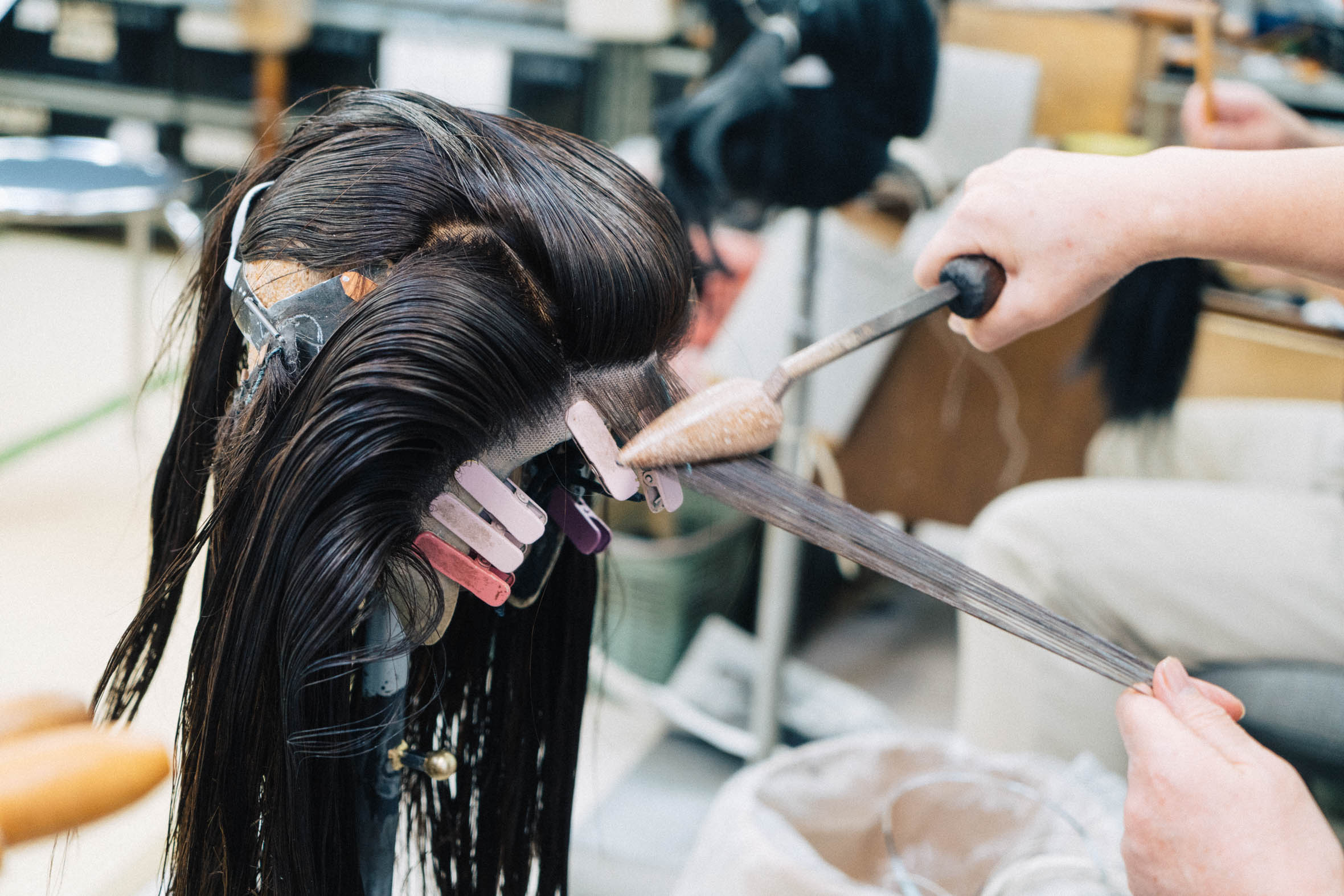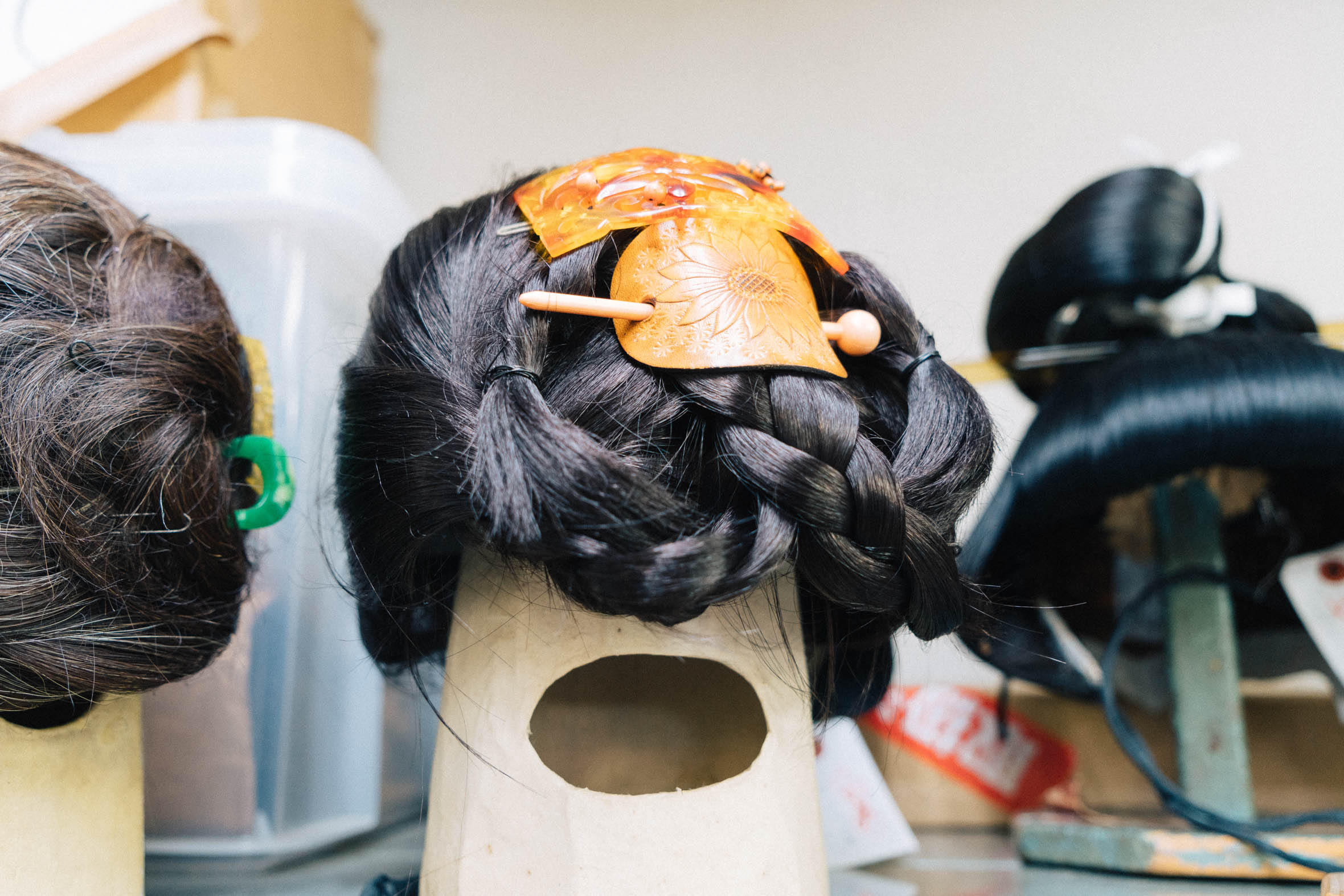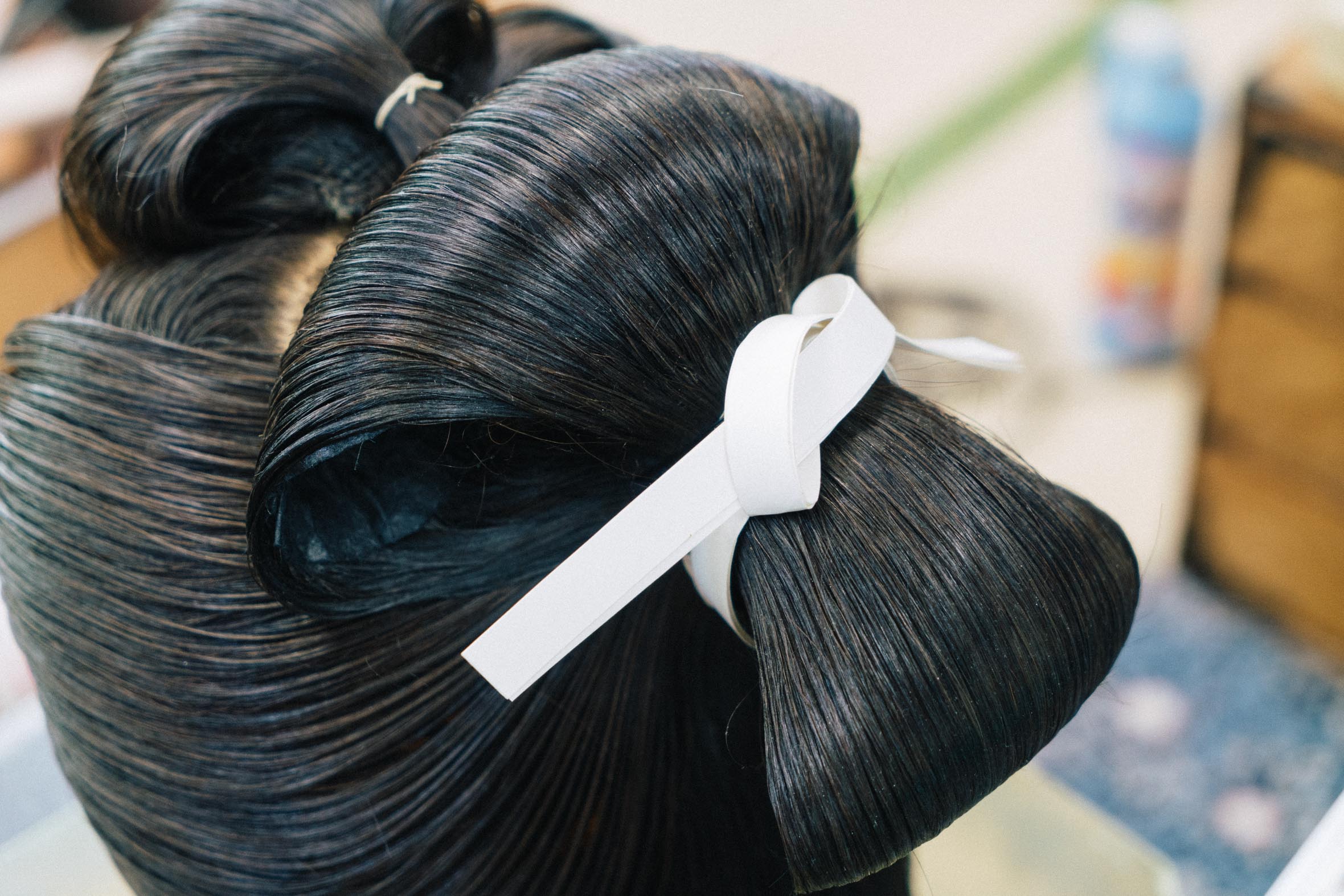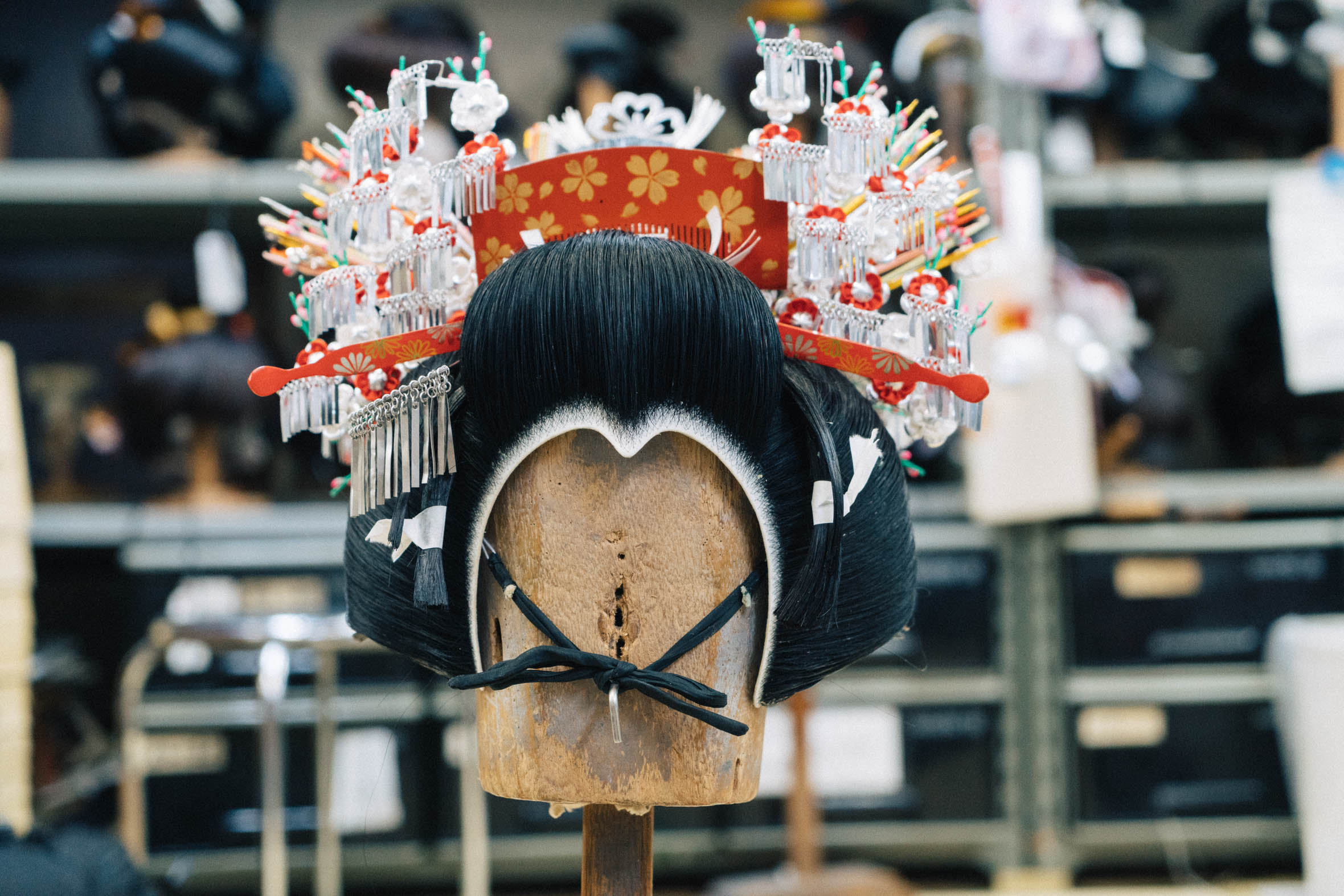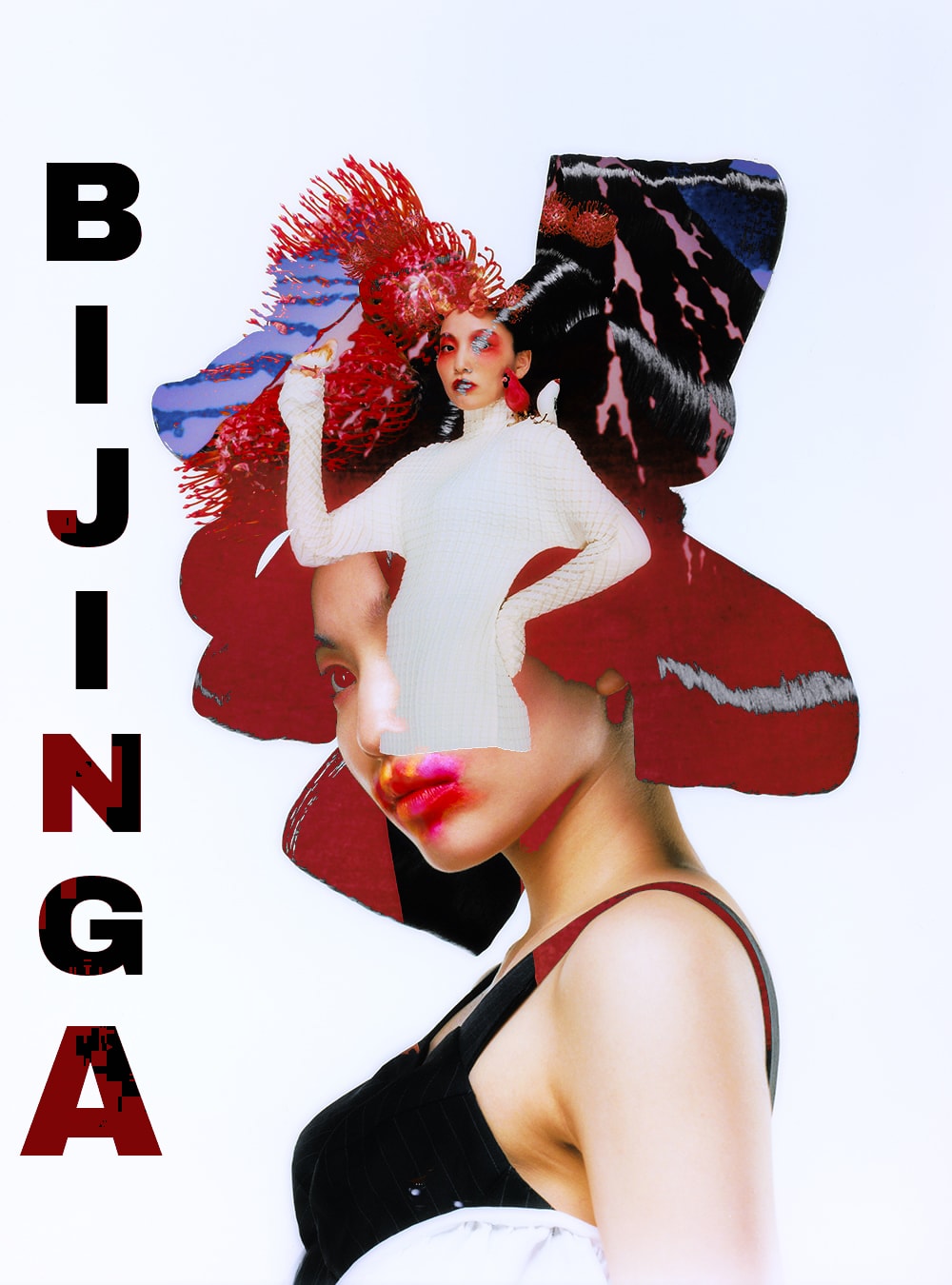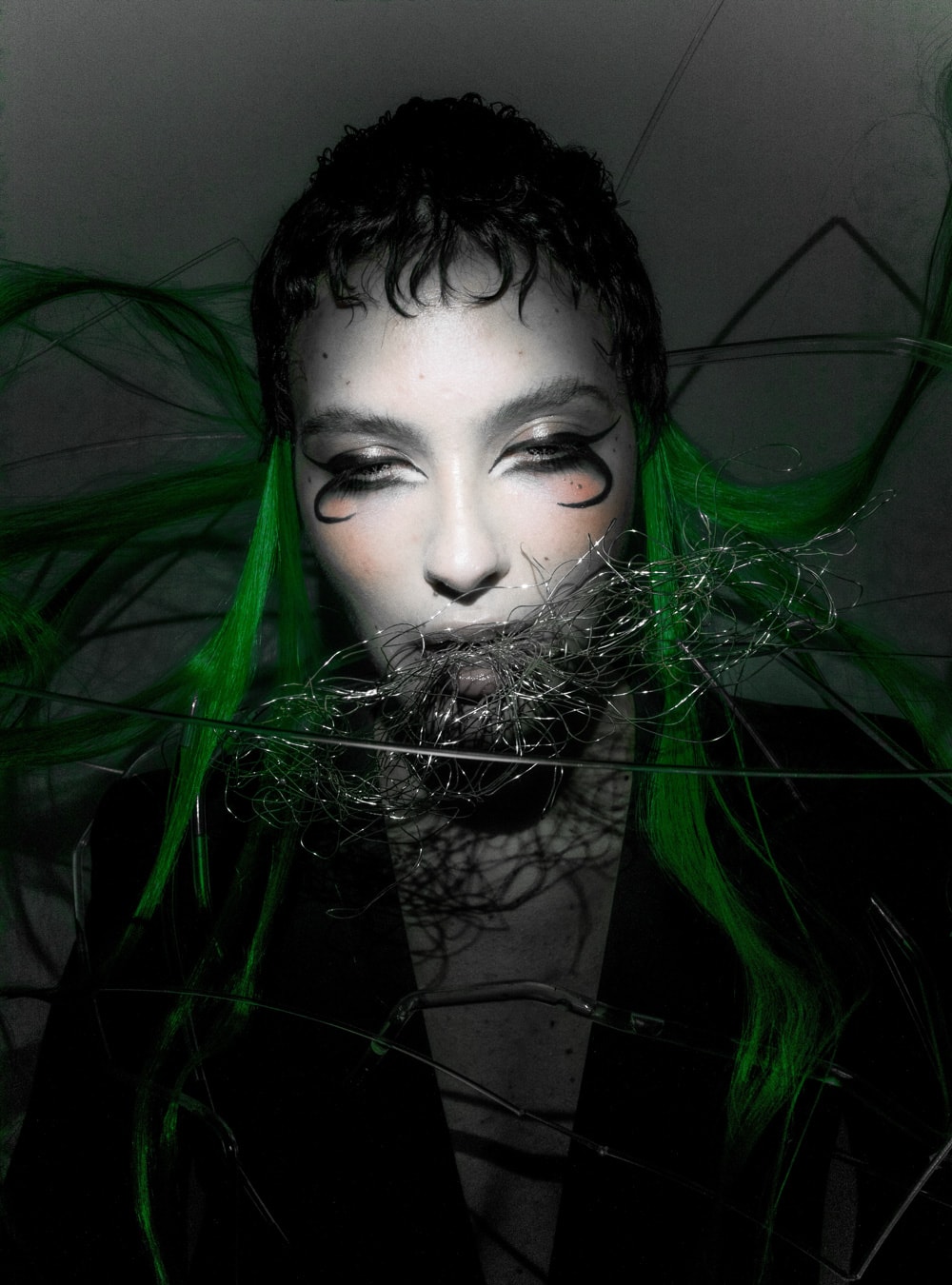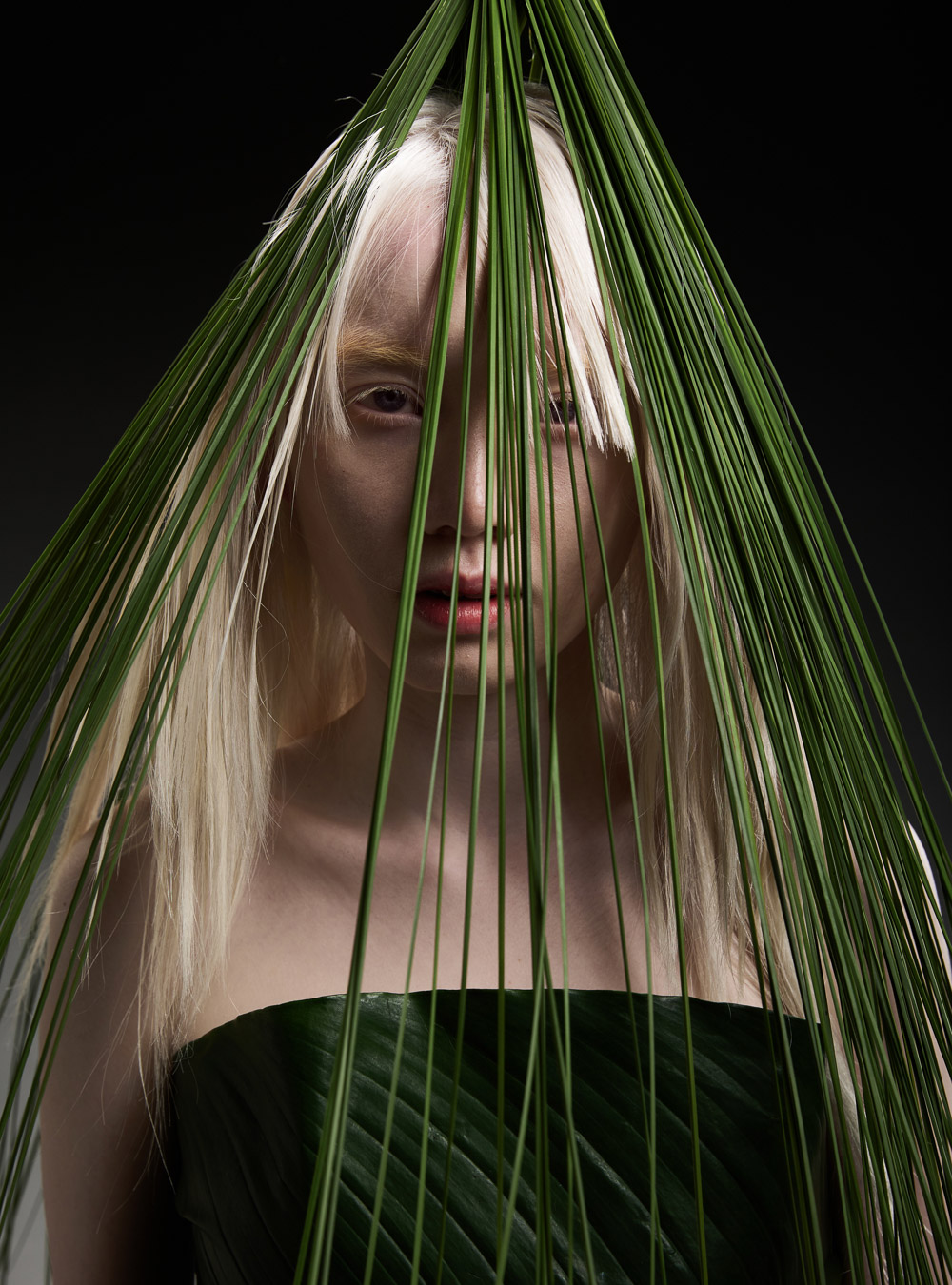PEOPLE: 81-year old wig stylist Kanehisa Osawa gives us a tour of his bustling Tokyo studio
Photography: Panos Damaskinidis
Video: Antonio Celotto
Interview: Tetsu Itoh, Alex Mascolo, Nathan Dytor
Words: Alex Mascolo
Special Thanks: Kanehisa Osawa
Master wig stylist Kanehisa Osawa has practiced his craft for over 60 years, starting out at his father’s studio aged 18. Here he was taught the art of Kabuki wig styling. Kabuki, a classical Japanese dance-drama popularised during the 17th century, is known for the dramatic make-up and wigs worn by its performers.
Eventually setting up his own studio in Ginza, Tokyo, Osawa began to expand outside of the Kabuki business, making wigs for Geishas and period dramas as well as for other branches of Japanese theatre.
“A Tokoyama needs to learn many types of hair styles. To be a real craftsman you must learn for about 20 years”
While Osawa works exclusively as a wig stylist, known as a Tokoyama, his company oversees every element of the wig making process. INFRINGE went behind the scenes at his bustling workshop for a rare glimpse of wig making in action. Over the 3 floors of the busy factory, Katsuraya (wig-makers) and Tokoyama (wig-stylists), work alongside each other in teams of two to create each wig. “Our relationship is like a married couple,” Osawa jokes.
When reproducing traditional hairstyles from the Edo and Sengoku periods, great care is taken “to express the Japanese history and recreate the era as much as possible”, Osawa explains. Hairstyles, particularly during the Edo period, denoted the wearer’s status, including job, age and even romantic status. They can also vary considerably from region to region. “There are a lot of differences between hairstyles in Tokyo and Kyoto,” Osawa explains, “the most popular example of this is that whilst the Maikos of Kyoto dress their own hair, Tokyo’s Geisha wear wigs”.
Kabuki wig making heavily relies on traditional techniques, passed down from generation to generation. “Although many of the hairstyles we try to recreate are documented in Ukiyo-e prints (genre of Japanese art), I am not a scholar, so I don’t know how much of it is true,” Osawa says. “But working for my father I basically grew up in Kabuki culture, even though I didn’t live in that era.”
- ANTHROPOLOGY OF HAIR
- ANTHROPOLOGY OF HAIR
- ANTHROPOLOGY OF HAIR
- ANTHROPOLOGY OF HAIR
- ANTHROPOLOGY OF HAIR
